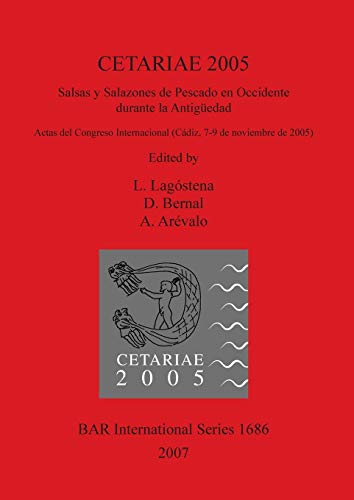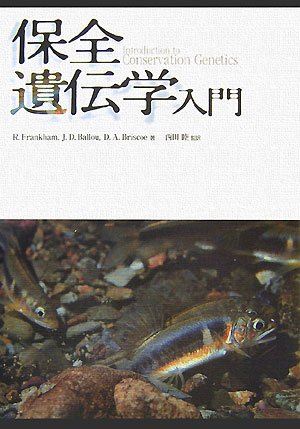- 著者
- edited by L. Lagóstena D. Bernal & A. Arévalo
- 出版者
- John and Erica Hedges
- 巻号頁・発行日
- 2007
- 著者
- 黄 東蘭 コウ トウラン D.L. HUANG
- 雑誌
- 紀要. 地域研究・国際学編
- 巻号頁・発行日
- vol.43, pp.61-82, 2011
- 著者
- D. Kikuchi
- 出版者
- THE PHYSICAL SOCIETY OF JAPAN , The Mathematical Society of Japan
- 雑誌
- Tokyo Sugaku-Butsurigaku Kwai Kiji (ISSN:21852669)
- 巻号頁・発行日
- vol.8, no.5, pp.179-198, 1896 (Released:2010-03-16)
- 参考文献数
- 6
- 著者
- D. Kikuchi
- 出版者
- THE PHYSICAL SOCIETY OF JAPAN , The Mathematical Society of Japan
- 雑誌
- Tokyo Sugaku-Butsurigaku Kwai Kiji (ISSN:21852669)
- 巻号頁・発行日
- vol.7, no.5, pp.107-110, 1896 (Released:2010-03-16)
- 参考文献数
- 4
- 著者
- D. Kikuchi
- 出版者
- THE PHYSICAL SOCIETY OF JAPAN , The Mathematical Society of Japan
- 雑誌
- Tokyo Sugaku-Butsurigaku Kwai Kiji (ISSN:21852669)
- 巻号頁・発行日
- vol.7, no.6, pp.114-117, 1896 (Released:2010-03-16)
- 著者
- D. Kikuchi
- 出版者
- THE PHYSICAL SOCIETY OF JAPAN , The Mathematical Society of Japan
- 雑誌
- Tokyo Sugaku-Butsurigaku Kwai Kiji (ISSN:21852669)
- 巻号頁・発行日
- vol.7, no.2, pp.24-26, 1896 (Released:2010-03-16)
- 著者
- D. Kikuchi
- 出版者
- THE PHYSICAL SOCIETY OF JAPAN , The Mathematical Society of Japan
- 雑誌
- Tokyo Sugaku-Butsurigaku Kwai Kiji (ISSN:21852669)
- 巻号頁・発行日
- vol.7, no.3, pp.47-53, 1896 (Released:2010-03-16)
- 参考文献数
- 8
1 0 0 0 OA AZIMUTH TABLE FOR THE POLARIS
- 著者
- A. Tanakadate D. Nagaoka
- 出版者
- THE PHYSICAL SOCIETY OF JAPAN , The Mathematical Society of Japan
- 雑誌
- Tokyo Sugaku-Butsurigaku Kwai Kiji (ISSN:21852669)
- 巻号頁・発行日
- vol.5, no.1, pp.51-60, 1894 (Released:2009-06-09)
- 著者
- D. ISITANI
- 出版者
- THE PHYSICAL SOCIETY OF JAPAN , The Mathematical Society of Japan
- 雑誌
- Tokyo Sugaku-Butsurigakukwai Kiji-Gaiyo (ISSN:21852685)
- 巻号頁・発行日
- vol.3, no.9, pp.170-173, 1906-11-17 (Released:2010-04-30)
1 0 0 0 OA 清代外モンゴルにおける書記の養成 : 東部二盟を中心に
- 著者
- ケレイドジン D・シーリン(錫莉)
- 出版者
- 内陸アジア史学会
- 雑誌
- 内陸アジア史研究 (ISSN:09118993)
- 巻号頁・発行日
- vol.26, pp.109-131, 2011-03-31 (Released:2017-10-10)
This paper examines the scribes' training functions in the banner and league offices in the eastern two leagues-Tusiyetu qan ayimav and Cecen qan ayimav-in Outer Mongolia under the Qing rule as well as the scribes' school established at the minister-office of Yeke Kuriy-e in the late Qing period. Based mainly on historical official documents, the author sheds light on dating the time when the scribes' training was started at the league and banner offices, the methods and contents of education there and, furthermore, clarifies various details related to the scribes' training school of the late Qing period, such as the school management, contents of education and regulations. The conducted research attests to the significance the scribes' training system, established in Outer Mongolia under the Qing rule, had on Mongolian history. This system played an important role in accomplishing the document-based administration in Outer Mongolia. It was also a significant factor in promoting Mongolian culture through spreading Mongolian letters and improving the literacy rate in Mongolian society.
1 0 0 0 ソ連の軍事戦略
- 著者
- V.D.ソコロフスキー 著
- 出版者
- 恒文社
- 巻号頁・発行日
- 1964
1 0 0 0 OA タスマン海におけるLamna masus (Bonnaterre) の記録
- 著者
- John D. Stevens Malcolm C. Dunning 町田 三郎
- 出版者
- The Ichthyological Society of Japan
- 雑誌
- 魚類学雑誌 (ISSN:00215090)
- 巻号頁・発行日
- vol.30, no.3, pp.301-307, 1983-11-28 (Released:2010-06-28)
- 参考文献数
- 25
タスマン海南部で漁獲されたネズミザメ属12個体をプロポーション計測値, 歯の構造および配列, 体色にもとづいて調査した結果, 標本はL.nasusと同定した.またオーストラリア産L.whitleyiの分類学的位置を検討した結果, 本種はおそらくL.nasusと同一であるとみなした.
- 著者
- Kazuki Oyama Fumihito Ichinohe Akira Yamada Yoshihiro Kitoh Yasuo Adachi Hayato Hayashihara Marcel D. Nickel Katsuya Maruyama Yasunari Fujinaga
- 出版者
- Japanese Society for Magnetic Resonance in Medicine
- 雑誌
- Magnetic Resonance in Medical Sciences (ISSN:13473182)
- 巻号頁・発行日
- pp.mp.2022-0035, (Released:2022-08-23)
- 参考文献数
- 13
- 被引用文献数
- 2
Purpose: The optimal temporal resolution for free-breathing dynamic contrast-enhanced MRI (FBDCE-MRI) of the pancreas has not been determined. This study aimed to evaluate the appropriate temporal resolution to achieve good image quality and to perform pharmacokinetic analysis in FBDCE-MRI of the pancreas using golden-angle radial sparse parallel (GRASP).Methods: Sixteen participants (53 ± 15 years, eight females) undergoing FBDCE-MRI were included in this prospective study. Images were retrospectively reconstructed at four temporal resolutions (1.8, 3.0, 4.8, and 7.8s). Two radiologists (5 years of experience) evaluated the image quality of each reconstructed image by assessing the visualization of the celiac artery (CEA), the common hepatic artery, the splenic artery, each area of the pancreas, and artifacts using a 5-point scale. Using Tissue-4D, pharmacokinetic parameters were calculated for each area in the reconstructed images at each temporal resolution for 16 examinations, excluding two with errors in the pharmacokinetic modeling analysis. Friedman and Bonferroni tests were used for analysis. A P value < 0.05 was considered statistically significant.Results: During vascular assessment, only scores for the CEA at 7.8s were significantly lower than the other temporal resolutions. Scores of all pancreatic regions and artifacts were significantly lower at 1.8s than at 4.8s and 7.8s. In the pharmacokinetic analysis, all volume transfer coefficients (Ktrans), rate constants (Kep), and the initial area under the concentration curve (iAUC) in the pancreatic head and tail were significantly lower at 4.8s and 7.8s than at 1.8s. iAUC in the pancreatic body and extracellular extravascular volume fraction (Ve) in the pancreatic head were significantly lower at 7.8s than at 1.8s.Conclusion: A temporal resolution of 3.0s is appropriate to achieve image quality and perform pharmacokinetic analysis in FBDCE-MRI of the pancreas using GRASP.
- 著者
- Michael D Fetters
- 出版者
- Japan Society of Mixed Methods Research
- 雑誌
- 混合研究法 (ISSN:24368407)
- 巻号頁・発行日
- vol.1, no.2, pp.102-110, 2022 (Released:2022-08-20)
Despite growing popularity in mixed methods research, many who are new to the field are unfamiliar with fundamental concepts and particularly about key aspects relative to integration in the paradigm and methodological dimensions. The mixed methods research integration trilogy was advanced as an approach for considering integration of the philosophical or paradigm, methodological, and methods dimensions of mixed methods research projects. In the mixed methods context, the paradigm dimension refers to a worldview held by scholars that comprises distinct assumptions and beliefs about matters such as what is considered reality (ontology), the basis of knowledge (epistemology), and research values (axiology). Methodology refers to the logic of inquiry grounded in its history of use. The methods dimension reflects the specific strategies, techniques, and procedures researchers use to conduct the study. An example illustrates how these different but interrelated dimensions are integrated in rigorous mixed methods studies. A template can be utilized to facilitate thinking and planning about these dimensions, and for representing to others these critical elements in projects. The integration trilogy provides a conceptual structure for considering the interconnectivity of the paradigm, methodological, and methods levels and can be used by mixed methods researchers in their own projects, and by teacher of mixed methods researchers with their learners. Greater attention to these levels of mixed methods research should enhance the rigor and transparency of the integrity of mixed methods studies.
1 0 0 0 保全遺伝学入門
- 著者
- R. Frank[h]am J.D. Ballou D.A. Briscoe著 高橋洋 山崎裕治 渡辺勝敏訳
- 出版者
- 文一総合出版
- 巻号頁・発行日
- 2007
1 0 0 0 OA Evaluation of Spatial Interpolation Techniques for Operational Climate Monitoring in the Philippines
- 著者
- Joseph Q. Basconcillo Ger Anne W. Duran Aaron A. Francisco Rusy G. Abastillas Flaviana D. Hilario Edna L. Juanillo Ana Liza S. Solis Anthony Joseph R. Lucero Shalou-Lea A. Maratas
- 出版者
- Meteorological Society of Japan
- 雑誌
- SOLA (ISSN:13496476)
- 巻号頁・発行日
- vol.13, pp.114-119, 2017 (Released:2017-06-28)
- 参考文献数
- 21
- 被引用文献数
- 4 9
To overcome the limitation of low network density and sparse distribution of meteorological stations, spatial interpolation is being performed for estimating meteorological variables that are not geographically covered by existing observation network. While there are several readily available spatial interpolation techniques, it is still difficult to determine which one best estimates actual observation. Considering the stimulus for disaster risk reduction, hydrological, agricultural, and other applications of interpolated data, this study compared six interpolation techniques (Inverse Distance Weighted (IDW), Completely Regularized Spline (CRS), Tension Spline (TS), Ordinary Kriging (OK), Universal Kriging (UK), and ANUSPLIN) that have been recommended in tropical maritime region. Validation results comparing historical monthly and interpolated rainfall data from 1981-2010 in 65 stations in the Philippines show that OK has the best performance among the aforementioned techniques followed by ANUSPLIN and TS. Ultimately, this study is a contribution to the existing inadequate literatures that have documented and evaluated interpolation techniques that can be used in archipelagic regions with prominent climate variability.
- 著者
- マーシャル D.C. ベイカー R.G.V. 山田 晴通
- 出版者
- 地理科学学会
- 雑誌
- 地理科学 (ISSN:02864886)
- 巻号頁・発行日
- vol.57, no.2, pp.120-137, 2002-04-28
- 著者
- Michiko Kano Lukas Van Oudenhove Patrick Dupont Tor D. Wager Shin Fukudo
- 出版者
- Tohoku University Medical Press
- 雑誌
- The Tohoku Journal of Experimental Medicine (ISSN:00408727)
- 巻号頁・発行日
- vol.250, no.3, pp.137-152, 2020 (Released:2020-03-03)
- 参考文献数
- 124
- 被引用文献数
- 3 8
When patients present with persistent bodily complaints that cannot be explained by a symptom-linked organic pathology (medically unexplained symptoms), they are diagnosed with ‘functional’ somatic syndromes (FSS). Despite their prevalence, the management of FSS is notoriously challenging in clinical practice. This may be because FSS are heterogeneous disorders in terms of etiopathogenesis. They include patients with primarily peripheral dysfunction, primarily centrally driven somatic symptoms, and a mix of both. Brain-imaging studies, particularly data-driven pattern recognition methods using machine learning algorithms, could provide brain-based biomarkers for these clinical conditions. In this review, we provide an overview of our brain imaging data on brain-body interactions in one of the most well-known FSS, irritable bowel syndrome (IBS), and discuss the possible development of a brain-based biomarker for FSS. Anticipation of unpredictable pain, which commonly elicits fear in FSS patients, induced increased activity in brain areas associated with hypervigilance during rectal distention and non-distention conditions in IBS. This was coupled with dysfunctional inhibitory influence of the medial prefrontal cortex (mPFC) and pregenual anterior cingulate cortex (pACC) on stress regulation systems, resulting in the activated autonomic nervous system (ANS) and neuroendocrine system stimulated by corticotropin-releasing hormone (CRH). IBS subjects with higher alexithymia, a risk factor for FSS, showed stronger activity in the insula during rectal distention but reduced subjective sensitivity. Reduced top-down regulation of the ANS and CRH system by mPFC and pACC, discordance between the insula response to stimulation and subjective sensation of pain, and stronger threat responses in hypervigilance-related areas may be a candidate brain-based biomarker.
- 著者
- 北 将樹 武仲 敏子 別所 学 Andres D. Maturana 木越 英夫 大舘 智志 上村 大輔
- 出版者
- 天然有機化合物討論会実行委員会
- 雑誌
- 天然有機化合物討論会講演要旨集 第60回天然有機化合物討論会実行委員会 (ISSN:24331856)
- 巻号頁・発行日
- pp.109-114, 2018 (Released:2021-09-26)
1.はじめに 新規神経毒の化学的解明は,薬理学,神経科学,精神医学など,広範な生命科学の発展に寄与する.自然界からは様々な生物から有毒物質が見いだされているが,毒を持つ哺乳類は非常に稀であり,食虫目トガリネズミやソレノドン,単孔目カモノハシなどしか知られていない.またこれらの毒は稀少かつ不安定であり,活性物質は長らく未解明であった.トガリネズミは唾液に毒を持ち,ミミズなど獲物を麻痺させる小型哺乳類である.北米に棲息するブラリナトガリネズミBlarina brevicaudaは特に強い毒を持ち,カエルやネズミなど脊椎動物も餌としてしまう(図1).演者らはこれまでに,この種の顎下腺から脊椎動物に対して麻痺と痙攣を引き起こす致死毒ブラリナトキシンを発見し,その構造を分子量35 kDaの糖タンパク質と決定した1).ブラリナトキシンはセリンプロテアーゼの一種カリクレインと高い相同性を示し,またセリンプロテアーゼ阻害剤によりその酵素活性およびマウス致死活性が阻害されることから,致死毒の本体であると結論づけた. 一方で,ブラリナトキシンを獲物に注入してから毒性を示すまで数時間以上かかること,およびトガリネズミが主な餌とするミミズや昆虫など無脊椎動物には効かないことから,この動物の唾液成分にはタンパク毒素とは異なる麻痺物質が含まれると予想し,顎下腺抽出物の分離を再検討することとした.
- 著者
- Ronnie S. Concepcion II Sandy C. Lauguico Jonnel D. Alejandrino Argel A. Bandala Edwin Sybingco Ryan Rhay P. Vicerra Elmer P. Dadios Joel L. Cuello
- 出版者
- Fuji Technology Press Ltd.
- 雑誌
- Journal of Advanced Computational Intelligence and Intelligent Informatics (ISSN:13430130)
- 巻号頁・発行日
- vol.25, no.5, pp.610-617, 2021-09-20 (Released:2021-09-20)
- 参考文献数
- 27
- 被引用文献数
- 28
Sustainability is a major challenge in any plant factory, particularly those involving precision agriculture. In this study, an adaptive fertigation system in a three-tier nutrient film technique aquaponic system was developed using a non-destructive vision-based lettuce phenotype (VIPHLET) model integrated with an 18-rule Mamdani fuzzy inference system for nutrient valve control. Four lettuce phenes, that is, fresh weight, chlorophylls a and b, and vitamin C concentrations as outputted by the genetic programming-based VIPHLET model were optimized for each growth stage by injecting NPK nutrients into the mixing tank, as determined based on leaf canopy signatures. This novel adaptive fertigation system resulted in higher nutrient use efficiency (99.678%) and lower chemical waste emission (14.108 mg L-1) than that by manual fertigation (92.468%, 178.88 mg L-1). Overall, it can improve agricultural malpractices in relation to sustainable agriculture.








